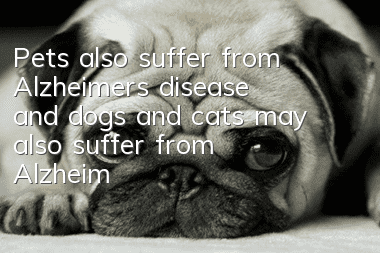What infectious diseases are dogs most susceptible to?

Infectious diseases are a type of diseases caused by various pathogens that can be transmitted between animals. Most of the pathogens are microorganisms, and a small proportion are parasites.
Usually these diseases can be transmitted through direct contact, body fluids and excretions, objects contaminated by infected persons, and can be transmitted through air, water, food, contact, soil, vertical transmission, etc.
1. Canine distemper virus:
Canine distemper virus can infect many types of terrestrial carnivorous animals, but mainly dogs. Anyone of any age can be infected, and the probability of death of dogs from this disease is very high.
Body temperature as high as 39.5 to 41 degrees Celsius; loss of appetite and depression;
Gastrointestinal diseases, vomiting, diarrhea, bloody stools; listlessness, lethargy;
2. Parvovirus disease:
This disease is particularly easy to transmit among puppies. It develops very quickly, is highly contagious, and has a very high chance of death. After a dog is infected with parvovirus, there will be an incubation period of about 7 days and then symptoms such as diarrhea and fever will gradually begin to appear.
Canine parvovirus gastroenteritis is commonly known as "intestinal inversion";
It has a high incidence rate, strong contagiousness and high mortality, and is most common in puppies.
3. Canine viral enteritis:
Viral enteritis is caused by oral infection of virus-contaminated feces. This virus is very resistant in the natural environment and is a very terrible disease. In daily life, you must remember to vaccinate your dog regularly to improve your dog's immunity. .
4. Canine coronavirus:
Coronavirus infection is an acute gastrointestinal infectious disease. Puppies are most susceptible to infection, with an incidence rate of almost 100% and a fatality rate of 50%. The virus is transmitted to healthy dogs through direct and indirect contact through the respiratory and digestive tracts. Dogs will develop symptoms such as diarrhea and vomiting after becoming sick. This disease sometimes occurs alone, and is often mixed with canine parvovirus, which aggravates the course of the disease.
Lack of energy, drowsiness, decreased appetite, and mostly no change in body temperature;
Repeated vomiting, first vomiting undigested food, and then vomiting yellow sour mucus;
5. Rabies:
Rabies is a fatal infectious disease. The clinical symptoms of sick dogs may include extreme excitement, sensitivity to sounds, dilated pupils, biting people, animals and other objects, strange barking, difficulty swallowing, tongue sticking out, drooling, and disordered movement. ,smokeIn the later stage, he may suffer from stranguria and paralysis all over the body and die.
Prodromal or aggressive stage: The sick dog is depressed, likes to hide in dark places, behaves abnormally, and has dilated pupils;
Exciting phase: The sick dog is manic, aggressive, has difficulty breathing, urinating and defecating, drooling, etc.
- How to know if your dog has a fever? What are the characteristics of a dog’s fever?
- How to train a dog to see? Dog training tips!
- What to pay attention to when a female dog is in heat
- How to train a Cocker Spaniel? How many months does it take to start training a Cocker Spaniel?
- What are the key points for raising Akita dogs?
- 6 key points for training puppies to go to the toilet
- What are the reasons why Caucasian dogs gain weight?
- What's wrong with dogs grinding their teeth?
- What should you do if your Shiba Inu likes to bite? Here’s a trick to prevent your Shiba Inu from biting!
- Symptoms and causes of motion sickness in dogs



